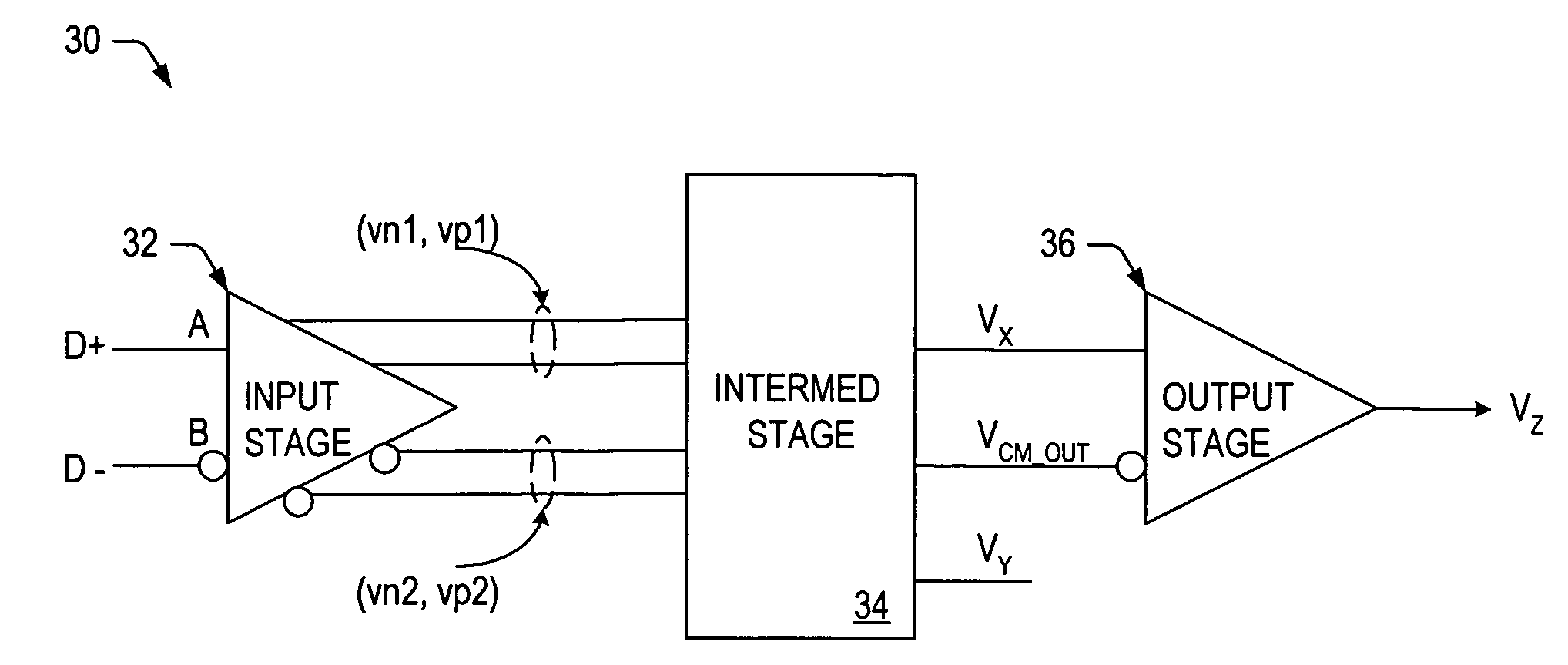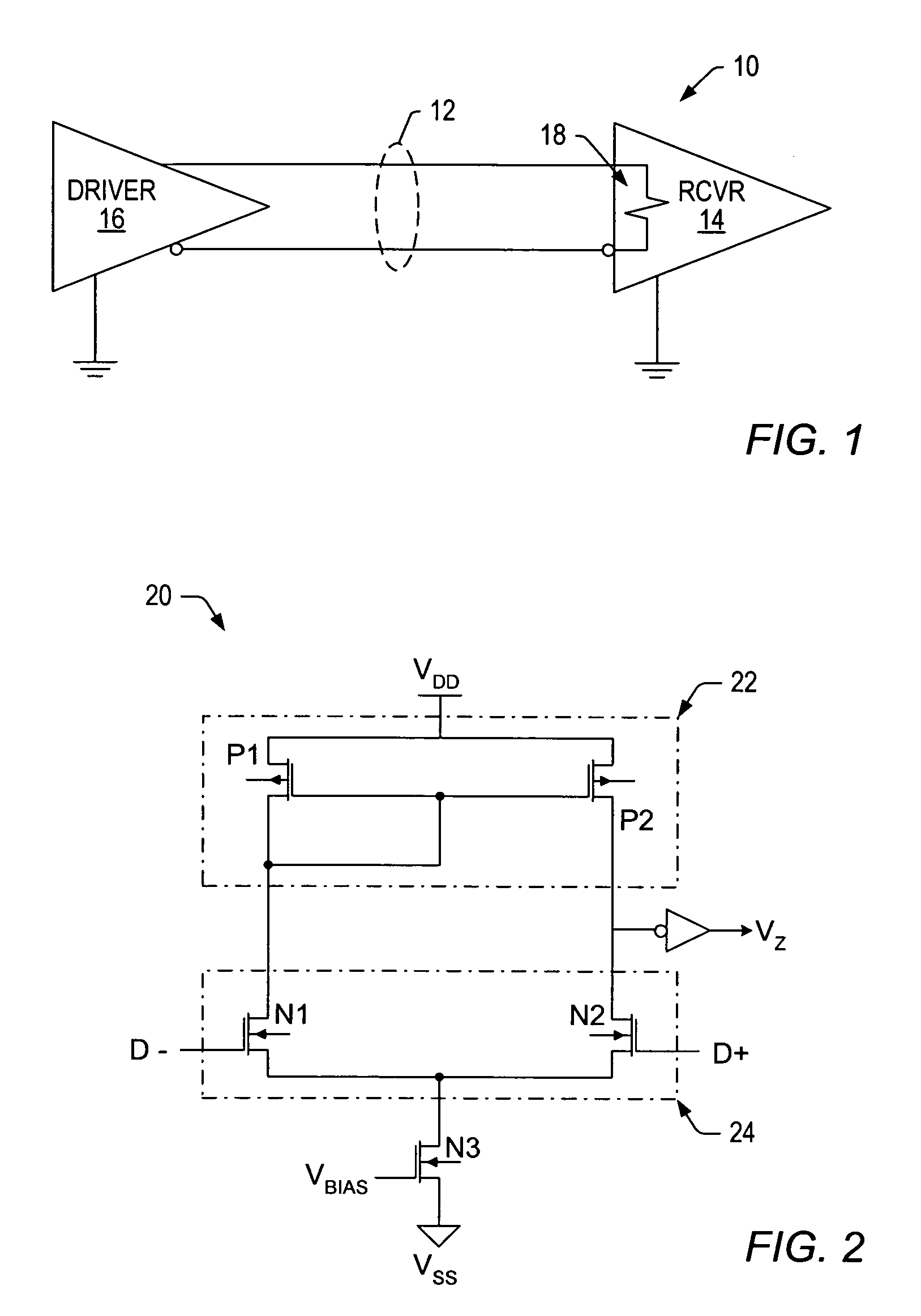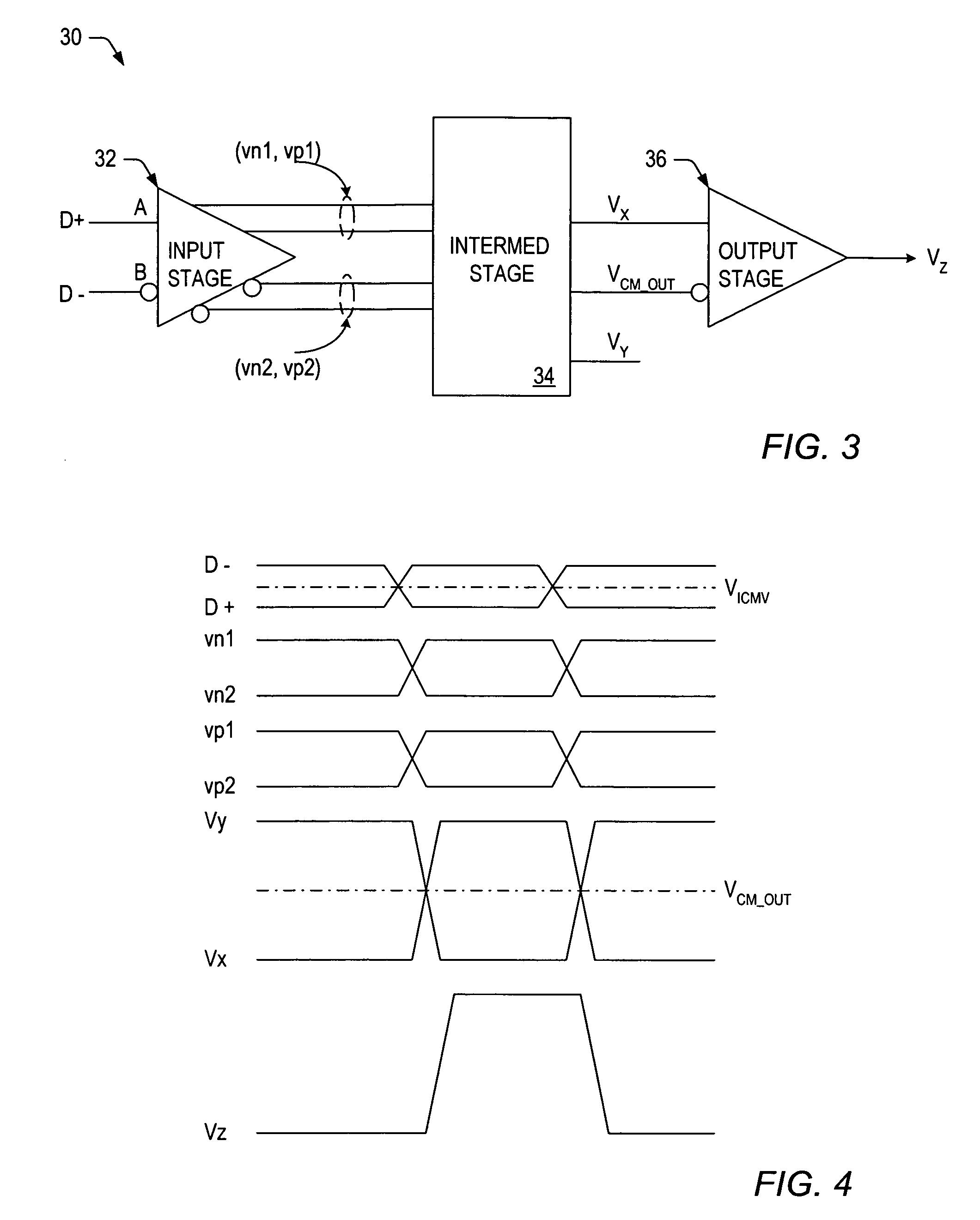Differential receiver with wide input common mode range and low duty cycle distortion
a receiver and common mode technology, applied in the field of data transmission, can solve the problems of severe duty cycle distortion in single-ended signal output, affecting the output duty cycle, and the limit of the common mode voltage that the practical sense amplifier can accept, so as to avoid excessive duty cycle distortion, improve the speed, and increase the operating frequency of the signal path
- Summary
- Abstract
- Description
- Claims
- Application Information
AI Technical Summary
Benefits of technology
Problems solved by technology
Method used
Image
Examples
Embodiment Construction
[0033]Turning now to the drawings, FIG. 1 illustrates a transmission system 10. System 10 includes a transmission path made up of possibly two lines that are configured to receive differential signals. The opposing ends of transmission path 12 include a pair of interface devices, or transceivers. Though each interface device preferably includes both a receiver and transmitter, transmission system 10 is shown only with the receiver and transmitter (or driver) portions 14 and 16, respectively. Transmitter 16 drives the differential signals across path 12 and receiver 14 senses the voltage differential between those signals.
[0034]In general, transmission system 10 may involve any communication system that operates in a low voltage environment and conveys data using differential signaling. If the differential signals are low voltage differential signals (LVDS) specified by the American National Standards Institute (ANSI) / Telecommunications Industry Association (TIA) / Electronic Industrie...
PUM
 Login to View More
Login to View More Abstract
Description
Claims
Application Information
 Login to View More
Login to View More - R&D
- Intellectual Property
- Life Sciences
- Materials
- Tech Scout
- Unparalleled Data Quality
- Higher Quality Content
- 60% Fewer Hallucinations
Browse by: Latest US Patents, China's latest patents, Technical Efficacy Thesaurus, Application Domain, Technology Topic, Popular Technical Reports.
© 2025 PatSnap. All rights reserved.Legal|Privacy policy|Modern Slavery Act Transparency Statement|Sitemap|About US| Contact US: help@patsnap.com



